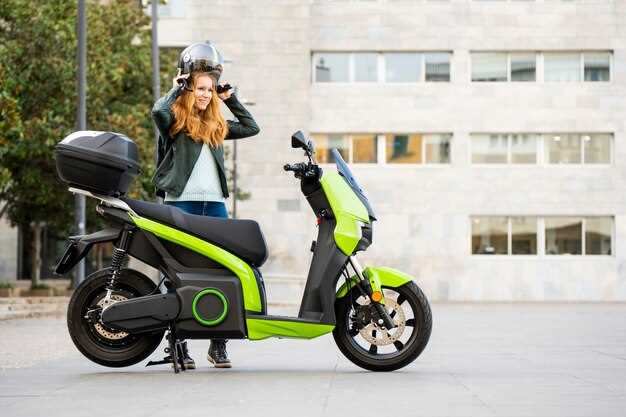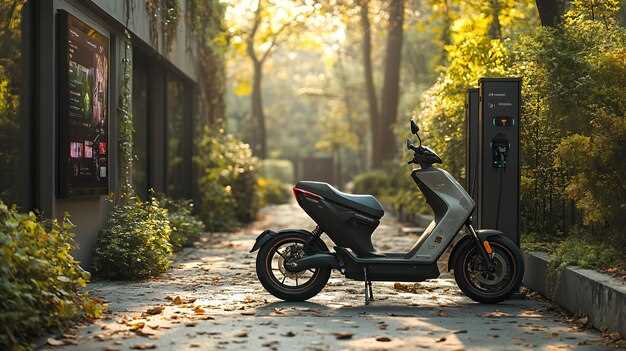
The durability of electric motorcycle batteries is a critical aspect that directly impacts the lifespan and efficiency of electric vehicles (EVs). As more riders transition from traditional gasoline-powered bikes to electric alternatives, understanding the longevity and reliability of battery systems becomes increasingly important. When evaluating the performance of an electric motorcycle, the battery’s ability to withstand various conditions over time is a key factor that can influence purchasing decisions.
Electric motorcycle batteries, primarily lithium-ion, are designed to provide a substantial range and power output. However, several factors can affect their lifespan, including temperature, charging habits, and usage patterns. Riders must be aware of these elements to maximize the longevity of their batteries while ensuring optimal performance. The durability of these power sources not only affects individual riders but also contributes to the overall perception of electric motorcycles in the rapidly evolving EV market.
In this article, we will delve into the specific aspects of electric motorcycle batteries that determine their durability and lifespan. We will explore how proper maintenance, environmental conditions, and technological advancements play a role in extending battery life, ultimately benefiting both riders and the environment. Understanding these factors will empower consumers to make informed decisions when investing in electric motorcycles that meet their needs and contribute to the growing popularity of sustainable transportation.
Factors Influencing the Lifespan of Electric Motorcycle Batteries

The lifespan of electric motorcycle batteries is affected by several key factors that can determine their performance and longevity. Understanding these factors can help riders make informed decisions regarding maintenance and usage.
One significant factor is temperature. Batteries operate optimally within specific temperature ranges. Excessive heat can accelerate degradation, while extremely low temperatures may reduce performance temporarily. Maintaining the battery within the ideal temperature range is crucial for extending its lifespan.
Charging habits also play a critical role. Frequent deep discharges and overcharging can damage the battery over time. It is advisable to charge the battery when it reaches around 20% capacity and to unplug it once it reaches full charge to avoid stressing the cells.
Battery chemistry influences the overall lifespan as well. Lithium-ion batteries, commonly used in electric motorcycles, are known for their high energy density and efficiency. However, variations in quality and construction can lead to differences in durability among brands and models.
Environmental factors, such as humidity and exposure to moisture, can impact battery performance. Keeping the battery dry and protected from corrosive elements can further enhance its longevity.
Finally, the riding style and usage patterns can significantly affect battery lifespan. Aggressive acceleration and frequent high-speed riding can drain the battery faster, leading to increased wear and reduced overall lifespan. Opting for a smoother and more consistent riding approach can help preserve battery health.
Maintenance Tips for Maximizing Battery Life in Electric Motorcycles
To enhance the lifespan of electric motorcycle batteries, regular maintenance is crucial. One of the primary steps is to keep the battery charged between 20% and 80%. Avoid allowing the battery to fully deplete or remain at 100% for extended periods, as this can negatively impact its overall performance and longevity.
Temperature control also plays a significant role in battery health. Store and charge your electric motorcycle in a cool, dry location. Extreme temperatures, both hot and cold, can adversely affect the battery’s capacity and efficiency.
Regularly inspect the battery terminals for corrosion and ensure they are clean and securely connected. Poor connections can lead to energy loss and reduce the efficiency of your battery. Additionally, use the manufacturer’s recommended charger to prevent overheating and overcharging, which can significantly shorten battery lifespan.
It’s also beneficial to practice a balanced charging routine. Avoid frequent rapid charging, as this can generate heat, leading to potential damage over time. Consider performing a full discharge and recharge cycle occasionally, as this can recalibrate the battery management system, helping to maintain optimal performance.
Finally, keep your electric motorcycle firmware updated, as manufacturers often release updates that can enhance battery management and overall efficiency. By following these maintenance tips, you can significantly prolong the lifespan of your electric motorcycle battery.
Signs That Indicate Battery Replacement is Needed

Electric motorcycle batteries have a limited lifespan, typically ranging from 5 to 10 years, depending on usage and maintenance. Recognizing when it’s time for a replacement is crucial for ensuring optimal performance and safety.
- Reduced Range: If you notice a significant decrease in the distance your electric motorcycle can travel on a full charge compared to when it was new, this is a strong indicator that the battery may be losing its capacity.
- Longer Charging Time: An increase in the amount of time it takes to fully charge the battery can signify aging or declining performance, suggesting that a replacement might be necessary.
- Unusual Battery Temperature: If the battery becomes excessively hot during charging or operation, it can be a sign of malfunction or degradation, warranting a professional evaluation.
- Visible Damage: Inspect the battery for physical damages such as swelling, leaks, or corrosion. Any visible damage could compromise the battery’s integrity and performance, indicating the need for a replacement.
- Warning Lights: Many electric motorcycles are equipped with diagnostic systems that can alert the rider to potential battery issues. Pay attention to any warning lights or error messages on your display panel.
- Poor Performance: If you experience sluggish acceleration or struggle to maintain speed, your battery may not be supplying sufficient power, which calls for a thorough check and possible replacement.
Regular maintenance and monitoring of battery health can prolong its lifespan, but being aware of these signs can significantly enhance your electric vehicle (EV) experience by ensuring you address issues before they become critical.

